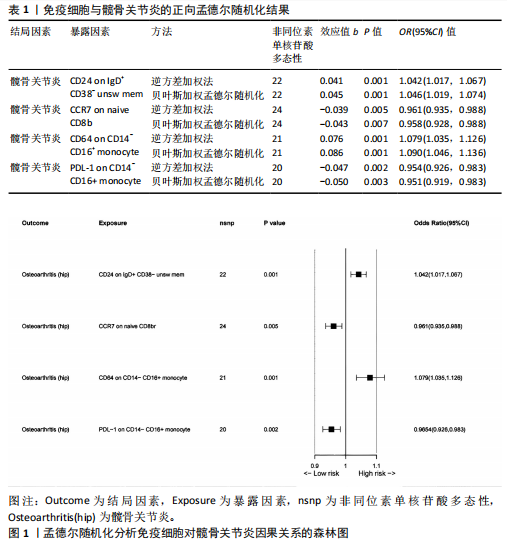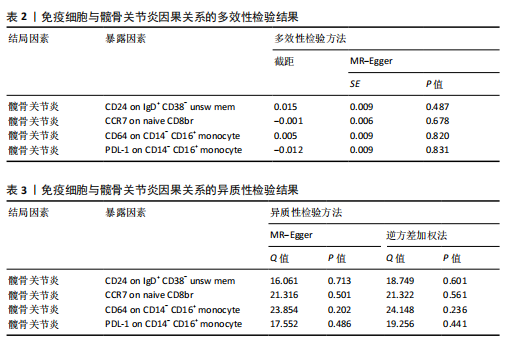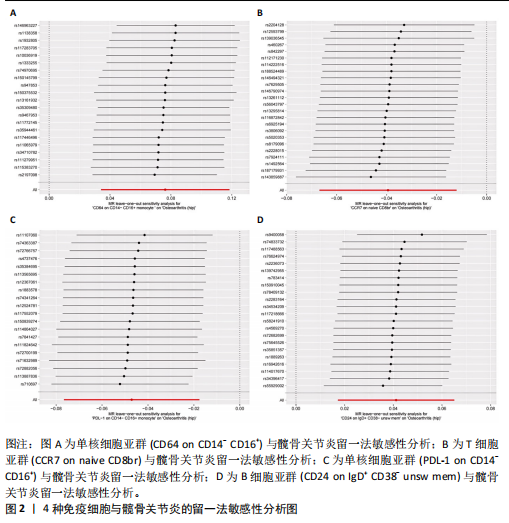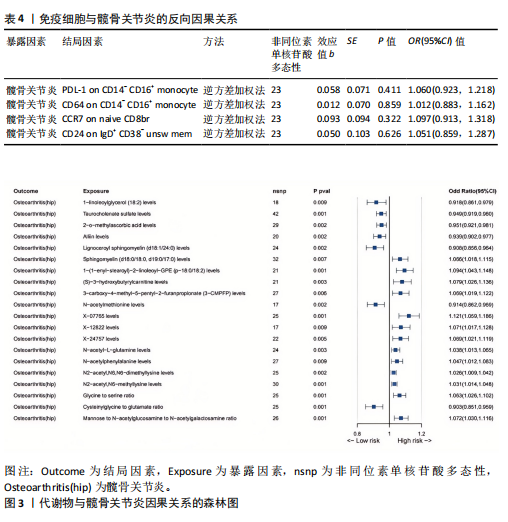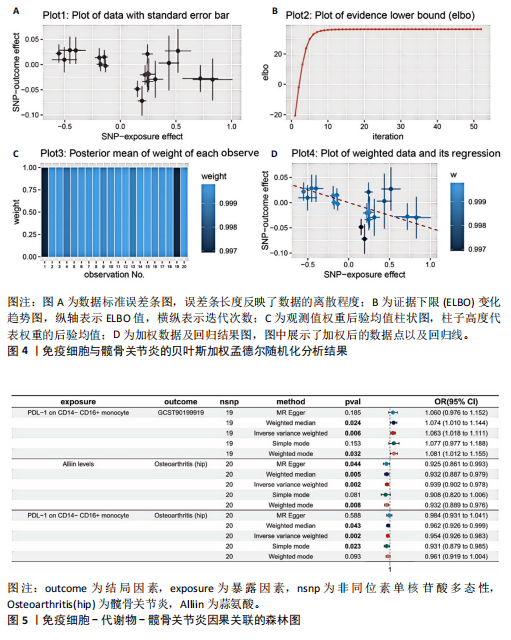[1] DAMERAU A, KIRCHNER M, PFEIFFENBERGER M, et al. Metabolic reprogramming of synovial fibroblasts in osteoarthritis by inhibition of pathologically overexpressed pyruvate dehydrogenase kinases. Metab Eng. 2022;72:116-132.
[2] BOER CG, HATZIKOTOULAS K, SOUTHAM L, et al. Deciphering osteoarthritis genetics across 826,690 individuals from 9 populations. Cell. 2021;184(18):4784-4818.e4717.
[3] GBD 2021 Osteoarthritis Collaborators. Global, regional, and national burden of osteoarthritis, 1990-2020 and projections to 2050: a systematic analysis for the Global Burden of Disease Study 2021. Lancet Rheumatol. 2023;5(9):e508-e522.
[4] 潘炳,周颖芳,方芳,等.骨性关节炎的国内外研究现状及治疗进展[J].中国中医基础医学杂志,2021,27(5):861-865.
[5] CHI HB, PEPPER M, THOMAS PG. Principles and therapeutic applications of adaptive immunity. Cell. 2024;187(9):2052-2078.
[6] CUI A, HUANG T, LI SQ, et al. Dictionary of immune responses to cytokines at single-cell resolution. Nature. 2024;625(7994): 377-384.
[7] XIA SY, CHEN ZH, SHEN C, et al. Higher-order assemblies in immune signaling: Supramolecular complexes and phase separation. Protein Cell. 2021;12(9):680-694.
[8] 刘畅,卞华,许博.基于生物信息学探讨骨关节炎相关分子机制及免疫细胞浸润分析[J].中国医科大学学报,2023, 52(5):385-391+397.
[9] BAUERMEISTER A, MANNOCHIO-RUSSO H, COSTA-LOTUFO LV, et al. Mass spectrometry-based metabolomics in microbiome investigations. Nat Rev Microbiol. 2022;20(3):143-160.
[10] REINKE SN, CHALECKIS R, WHEELOCK CE. Metabolomics in pulmonary medicine: Extracting the most from your data. Eur Respir J. 2022;60(2):2200102.
[11] WANG X, NING YJ, LI C, et al. Alterations in the gut microbiota and metabolite profiles of patients with Kashin-Beck disease, an endemic osteoarthritis in China. Cell Death Dis. 2021;12(11):1015.
[12] SKRIVANKOVA VW, RICHMOND RC, WOOLF BAR, et al. Strengthening the reporting of observational studies in epidemiology using Mendelian randomization: The STROBE-MR statement. JAMA. 2021;326(16):1614-1621.
[13] BURGESS S, DAVEY SMITH G, DAVIES NM, et al. Guidelines for performing Mendelian randomization investigations: Update for summer 2023. Wellcome Open Res. 2019; 4:186.
[14] DAVIES NM, HOLMES MV, DAVEY SMITH G. Reading Mendelian randomisation studies: A guide, glossary, and checklist for clinicians. BMJ. 2018;362:k601.
[15] ZHAO J, MING JS, HU XH, et al. Bayesian weighted Mendelian randomization for causal inference based on summary statistics. Bioinformatics. 2020;36(5):1501-1508.
[16] BOWDEN J, DAVEY SMITH G, BURGESS S. Mendelian randomization with invalid instruments: Effect estimation and bias detection through Egger regression. Int J Epidemiol. 2015;44(2):512-525.
[17] CHEN YH, LU TY, PETTERSSON-KYMMER U, et al. Genomic atlas of the plasma metabolome prioritizes metabolites implicated in human diseases. Nat Genet. 2023;55(1):44-53.
[18] 吕浩,张舸,胡芷苜,等.炎症、代谢物与骨质疏松症[J].中国组织工程研究, 2025,29(17):3697-3704.
[19] 詹群璋,张钰玲,韩雨欣,等.肥胖和骨质疏松之间的关联:一项两样本双向孟德尔随机化分析[J]. 中国组织工程研究, 2024,28(27):4319-4324.
[20] YE CJ, LIU D, CHEN ML, et al. Mendelian randomization evidence for the causal effect of mental well-being on healthy aging. Nat Hum Behav. 2024;8(9):1798-1809.
[21] WOOTTON RE, LAWN RB, MILLARD LAC, et al. Evaluation of the causal effects between subjective wellbeing and cardiometabolic health: Mendelian randomisation study. BMJ. 2018;362:k3788.
[22] CARTER AR, SANDERSON E, HAMMERTON G, et al. Mendelian randomisation for mediation analysis: Current methods and challenges for implementation. Eur J Epidemiol. 2021;36(5):465-478.
[23] CHEN JH, LIU YD, ZHAN PQ, et al. Bayesian-based analysis of the causality between 731 immune cells and erectile dysfunction: A two-sample, bidirectional, and multivariable Mendelian randomization study. Sex Med. 2024;12(4):qfae062.
[24] VERBANCK M, CHEN CY, NEALE B, et al. Detection of widespread horizontal pleiotropy in causal relationships inferred from Mendelian randomization between complex traits and diseases. Nat Genet. 2018;50(5):693-698.
[25] 刘帅祎,赵晓璇,李奇,等.九十一种炎症蛋白与颈椎间盘退变的因果关系[J].中国组织工程研究,2025,29(17):3732-3740.
[26] AU YEUNG SL, GILL D. Standardizing the reporting of Mendelian randomization studies. BMC Med. 2023;21(1):187.
[27] CARTER AR, SANDERSON E, HAMMERTON G, et al. Mendelian randomisation for mediation analysis: current methods and challenges for implementation. Eur J Epidemiol. 2021;36(5):465-478.
[28] SANDERSON E. Multivariable Mendelian Randomization and Mediation. Cold Spring Harb Perspect Med. 2021;11(2):a038984.
[29] LIN ZT, XUE HR, PAN W. Robust multivariable Mendelian randomization based on constrained maximum likelihood. Am J Hum Genet. 2023;110(4):592-605.
[30] COSTA F, VESCOVINI R, MARCHICA V, et al. PD-L1/PD-1 Pattern of Expression Within the Bone Marrow Immune Microenvironment in Smoldering Myeloma and Active Multiple Myeloma Patients. Front Immunol. 2020;11:613007.
[31] DE LANGE-BROKAAR BJ, IOAN-FACSINAY A, VAN OSCH GJ, et al. Synovial inflammation, immune cells and their cytokines in osteoarthritis: a review. Osteoarthritis Cartilage. 2012;20(12):1484-1499.
[32] ZHENG J, LIANG H, XU C, et al. An unbalanced PD-L1/CD86 ratio in CD14(++)CD16(+) monocytes is correlated with HCV viremia during chronic HCV infection. Cell Mol Immunol. 2014;11(3):294-304.
[33] WOODELL-MAY JE, SOMMERFELD SD. Role of Inflammation and the Immune System in the Progression of Osteoarthritis. J Orthop Res. 2020;38(2):253-257.
[34] YANG J, LI S, LI Z, et al. Targeting YAP1-regulated Glycolysis in Fibroblast-Like Synoviocytes Impairs Macrophage Infiltration to Ameliorate Diabetic Osteoarthritis Progression. Adv Sci (Weinh). 2024;11(5):e2304617.
[35] LI H, XIE S, QI Y, et al. TNF-α increases the expression of inflammatory factors in synovial fibroblasts by inhibiting the PI3K/AKT pathway in a rat model of monosodium iodoacetate-induced osteoarthritis. Exp Ther Med. 2018;16(6):4737-4744.
[36] BLANCO FJ, REGO I, RUIZ-ROMERO C. The role of mitochondria in osteoarthritis. Nat Rev Rheumatol. 2011;7(3):161-169.
[37] LI M, YIN H, YAN Z, et al. The immune microenvironment in cartilage injury and repair. Acta Biomater. 2022;140:23-42.
[38] FAN Z, LIU Y, SHI Z, et al. MiR-155 promotes interleukin-1β-induced chondrocyte apoptosis and catabolic activity by targeting PIK3R1-mediated PI3K/Akt pathway. J Cell Mol Med. 2020;24(15):8441-8451.
[39] ZHANG Q, SUN C, LIU X, et al. Mechanism of immune infiltration in synovial tissue of osteoarthritis: a gene expression-based study. J Orthop Surg Res. 2023;18(1):58.
[40] LI Z, DAI A, YANG M, et al. p38MAPK Signaling Pathway in Osteoarthritis: Pathological and Therapeutic Aspects. J Inflamm Res. 2022;15:723-734.
[41] LIETMAN C, WU B, LECHNER S, et al. Inhibition of Wnt/β-catenin signaling ameliorates osteoarthritis in a murine model of experimental osteoarthritis. JCI Insight. 2018;3(3):e96308.
[42] CHEN Y, PAN X, ZHAO J, et al. Icariin alleviates osteoarthritis through PI3K/Akt/mTOR/ULK1 signaling pathway. Eur J Med Res. 2022;27(1):204.
[43] PIETZNER M, STEWART ID, RAFFLER J, et al. Plasma metabolites to profile pathways in noncommunicable disease multimorbidity. Nat Med. 2021;27(3):471-479.
[44] DENG Y, HO CT, LAN Y, et al. Bioavailability, Health Benefits, and Delivery Systems of Allicin: A Review. J Agric Food Chem. 2023;71(49):19207-19220.
[45] SHANG A, CAO SY, XU XY, et al. Bioactive Compounds and Biological Functions of Garlic (Allium sativum L.). Foods. 2019; 8(7):246.
[46] MARTEL-PELLETIER J, BARR AJ, CICUTTINI FM, et al. Osteoarthritis. Nat Rev Dis Primers. 2016;2:16072.
[47] WRIGHT HL, LYON M, CHAPMAN EA, et al.
Rheumatoid Arthritis Synovial Fluid Neutrophils Drive Inflammation Through Production of Chemokines, Reactive Oxygen Species, and Neutrophil Extracellular Traps. Front Immunol. 2020;11:584116.
[48] ARELLANO-BUENDÍA AS, CASTAÑEDA-LARA LG, LOREDO-MENDOZA ML, et al. Effects of Allicin on Pathophysiological Mechanisms during the Progression of Nephropathy Associated to Diabetes. Antioxidants (Basel). 2020;9(11):1134.
[49] BORLINGHAUS J, ALBRECHT F, GRUHLKE MC, et al. Allicin: chemistry and biological properties. Molecules. 2014;19(8):12591-12618.
[50] QUINTERO-FABIÁN S, ORTUÑO-SAHAGÚN D, VÁZQUEZ-CARRERA M, et al. Alliin, a garlic (Allium sativum) compound, prevents LPS-induced inflammation in 3T3-L1 adipocytes. Mediators Inflamm. 2013;2013:381815.
[51] ZOU L, GUO H, BERZUINI C. Bayesian mendelian randomization with study heterogeneity and data partitioning for large studies. BMC Med Res Methodol. 2022;22(1):162.
[52] CHEBIB J, GUILLAUME F. Pleiotropy or linkage? Their relative contributions to the genetic correlation of quantitative traits and detection by multitrait GWA studies. Genetics. 2021;219(4):iyab159. |
